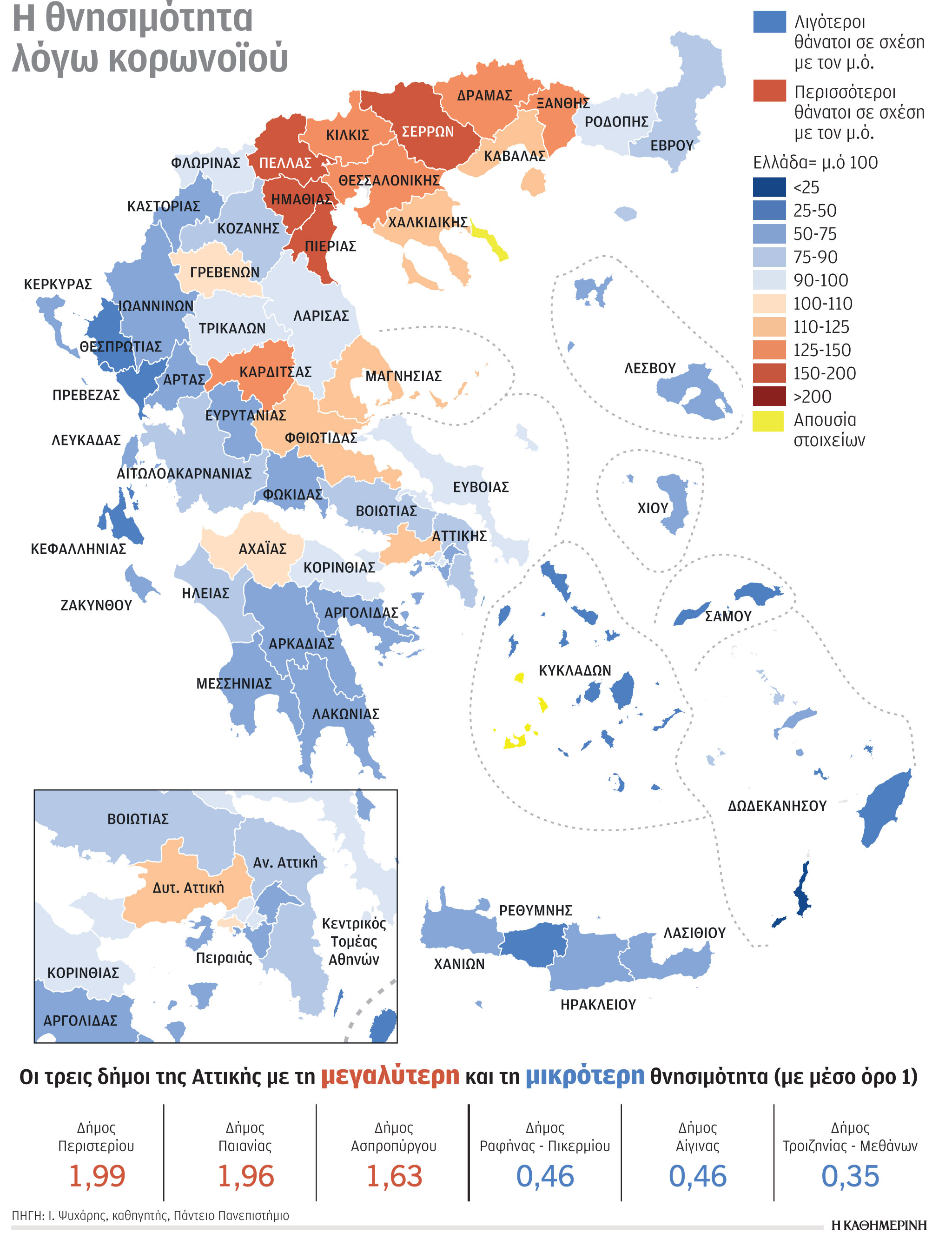
A few square meters turned out to be an ally … corona virus. Residents of low-income areas and poor living conditions for whom the size of the living space is less than 30 sq.m. per household member were more vulnerable and had a higher mortality rate than COVID-19 compared with residents of more prosperous and with better living conditions of municipalities. Municipalities were also the most vulnerable – channels of entry and transport in Hellas due to the large movement of travelers and goods. It is also characteristic that the trade contacts that the inhabitants of Central Macedonia had with neighboring countries cost them many diseases and deaths.
In particular, in Attica, the inhabitants of Peristeri and Paiana were found to be more vulnerable and with the highest percentage mortalityas shown by a major study titled “The Geography of Income Inequality in Greece: The Geography of Income Inequality in Greece (GEOINC)” conducted by the Regional Development Institute of Pantheion University, funded by the Hellenic Research and Innovation Foundation (ELIDEK), WHO introduced “K”. The mortality index in these areas was 1.99 and 1.96, i.e. twice the benchmark average of 1. This is followed by the municipalities of Aspropyrgos (1.63), Agia Varvara (1.54) and Mandras Idyllia (1.5). A high index is associated with the low economic level of residents, which affects their living conditions (small houses for the needs of the family), as well as their modes of transportation (they use public transport rather than cars or taxis). No one forgets that the most dangerous place for the transmission of the corona virus was public transport, and the main precaution was the strict isolation of the sick. In contrast, the municipalities with the lowest mortality index were Troisinia Methanon (0.35), Rafina Pikermio and Aegina (0.46% each), Kifisia (0.61) and Hydra (0.63). We see that the top five included areas either remote from major resettlement centers or with a high economic profile. For the same reasons, the inhabitants of Pella, Imatija, Serres and Pieria were more vulnerable, since these areas are the entry and transport gates to the Balkans and Central Europe. In fact, Pella, Imathia, Serres and Kilkis were areas that were “deep red” during the waves of the pandemic, with a death rate more than double one.
In Peristeri, Paiana and many parts of Central Macedonia, the deaths turned “red”, in contrast to Kifisia.
“Evidence shows that social policy must also be spatially inclusive. That is, to cover social groups of all income levels and all regions of the country. In order to make a policy in the field of health, education, we must identify those who are late in order to follow the general trend, “left behind people and areas”, as defined,” said the scientific leader of the project, Mr. Ioannis Psycharis. , a K-speaking professor at Panteillon University and director of the Institute for Regional Development.
At the same time, in terms of economic inequality in Greece, which the study captures, 2015 marks the year with the lowest income, with the only restriction on income only in some high-income municipalities. According to ELSTAT, in 2015 the average declared income per capita in Greece was 9,753 euros, while in Attica it was 12,006 euros. In 2019, the average declared per capita income remained relatively stable at €9,874 in Greece and €11,761 in Attica, but geographic disparity and polarization between high-income pockets on the one hand and low-income pockets in much of its territory have consolidated capital. the region of Attica on the other side. As Mr. Psycharis notes, “the income gap between metropolitan areas and the rest of the country, between urban and rural areas, and between Greek municipalities is a mosaic that reflects only some aspects of the geographical dimension of income inequality. in Greece. All this cannot but influence the electoral behavior of the voters in the basin and Attica and must be taken into account when interpreting the election results.”
Source: Kathimerini
Ashley Bailey is a talented author and journalist known for her writing on trending topics. Currently working at 247 news reel, she brings readers fresh perspectives on current issues. With her well-researched and thought-provoking articles, she captures the zeitgeist and stays ahead of the latest trends. Ashley’s writing is a must-read for anyone interested in staying up-to-date with the latest developments.